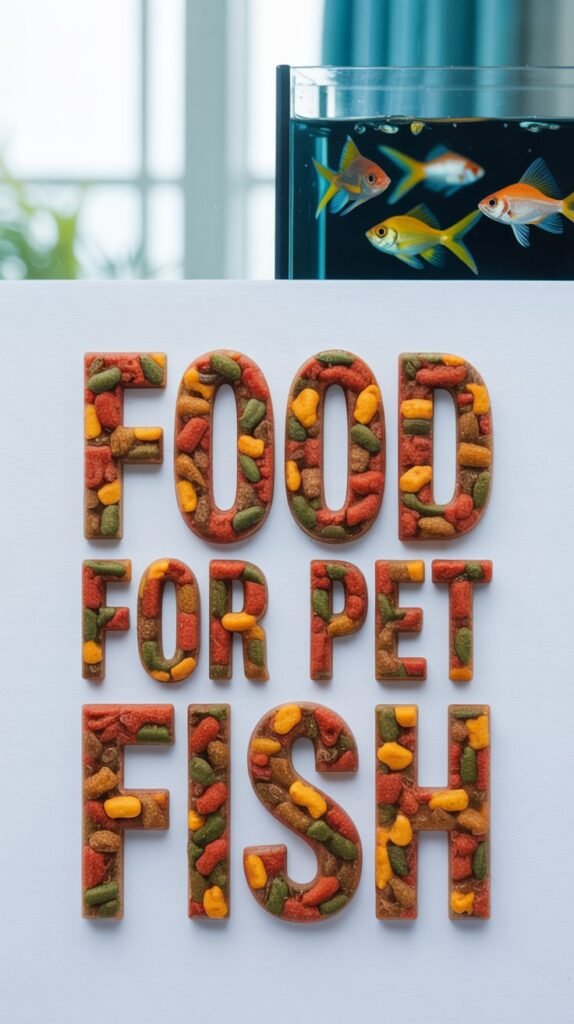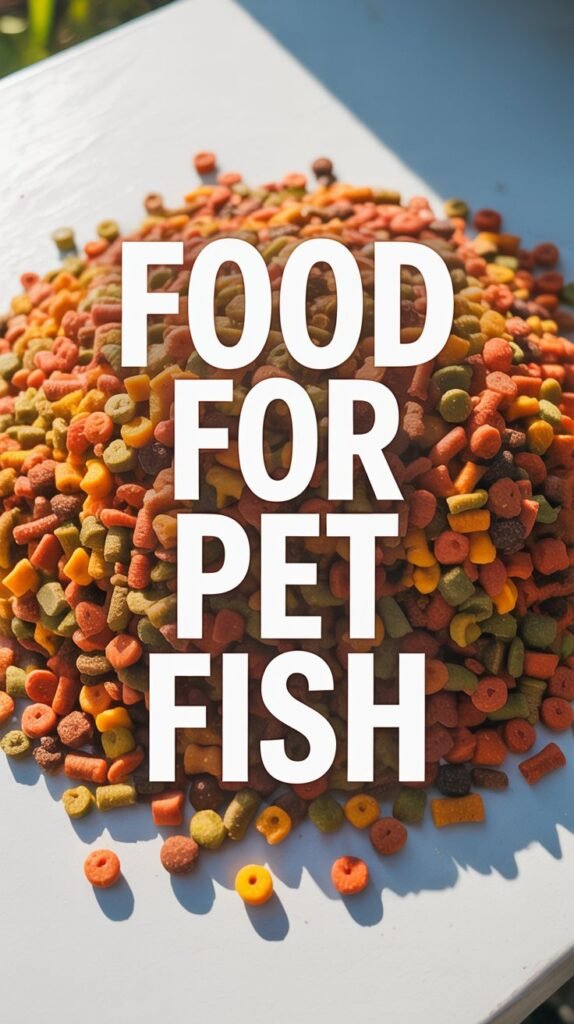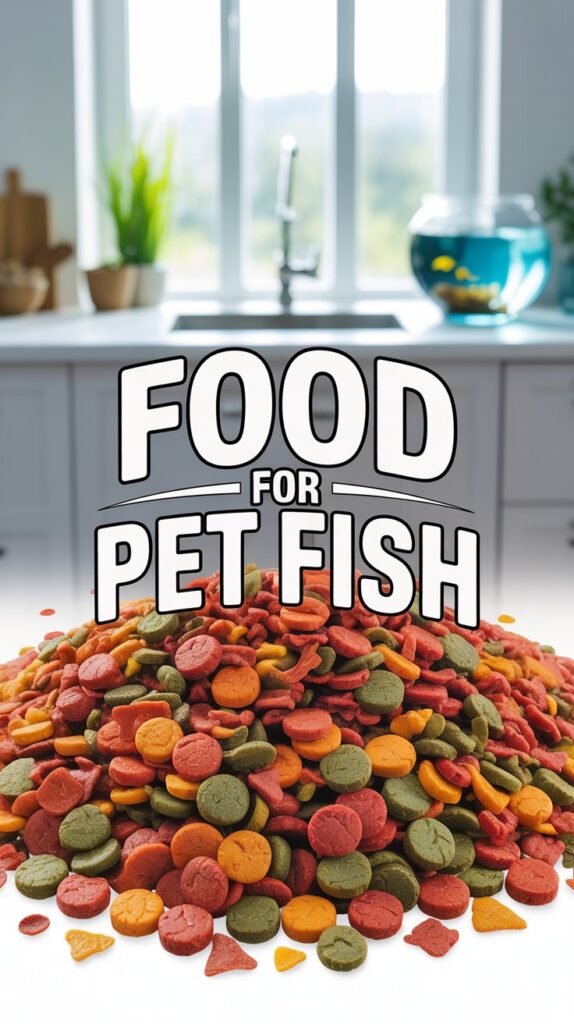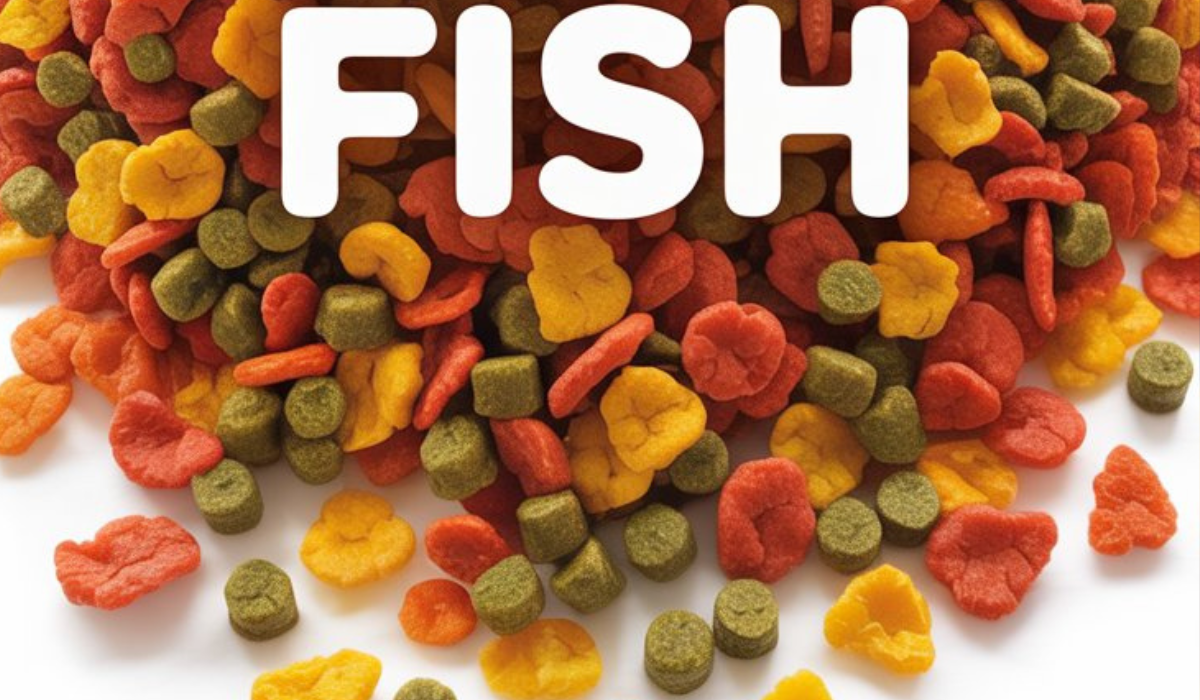Feeding your pet fish properly is one of the most important responsibilities of an aquarist. Just like humans, fish require a well-balanced diet to stay active, grow, and maintain vibrant colors. Many fish owners make the mistake of assuming that any fish food is suitable for all species, but in reality, the right food for pet fish depends on factors like fish type, size, and dietary habits.
Whether you own colorful guppies, majestic angelfish, or active goldfish, understanding the nutritional requirements of your aquatic pets is key to their long-term health. In this guide, we’ll cover everything you need to know about food for pet fish, including different types, feeding schedules, nutritional balance, and common mistakes to avoid.
Understanding Fish Nutrition
Before choosing food for your pet fish, it’s important to understand their basic dietary needs. Fish, like other animals, need a combination of proteins, fats, carbohydrates, vitamins, and minerals.
1. Proteins
Proteins are the building blocks of growth and tissue repair. They’re essential for muscle development, fin regeneration, and immune strength. Carnivorous and omnivorous fish require higher protein content than herbivores.
2. Fats
Fats provide concentrated energy and are essential for maintaining healthy cell membranes. However, excess fat can lead to obesity or liver issues in fish.
3. Carbohydrates
Fish use carbohydrates as a minor energy source. Herbivorous fish can digest plant-based carbs better than carnivores.
4. Vitamins and Minerals
Vitamins like A, C, D, and E, along with minerals such as calcium, phosphorus, and magnesium, are necessary for bone health, reproduction, and disease prevention.
A balanced fish diet ensures:
- Enhanced coloration
- Faster growth
- Improved immunity
- Longer lifespan
Types of Food for Pet Fish

There are several types of fish food available on the market, each designed for different species and feeding habits. Let’s look at the most common types and their benefits.
1. Flake Food
Flake food is the most popular and convenient choice for tropical and freshwater fish. It’s made by drying a blend of proteins, plant matter, and vitamins into thin flakes that float on the water surface.
Best for: Guppies, tetras, bettas, mollies, and angelfish.
Pros:
- Easy to use and store.
- Available in various formulations (color-enhancing, growth, tropical, etc.).
- Affordable and widely accessible.
Cons:
- Tends to lose nutrients quickly after hitting water.
- Not ideal for bottom feeders.
Feeding tip: Feed only what your fish can consume in 2–3 minutes to prevent water pollution.
2. Pellet Food
Pellet food comes in floating, slow-sinking, or sinking varieties, making it ideal for fish that feed at different water levels.
Best for: Goldfish, cichlids, koi, and large community fish.
Pros:
- Retains nutrients longer than flakes.
- Available in various sizes and formulations.
- Promotes consistent growth and energy.
Cons:
- Some pellets may swell in water, causing digestive issues.
- Must be soaked before feeding delicate species.
3. Freeze-Dried Food
Freeze-dried foods are real aquatic organisms (like brine shrimp, bloodworms, or daphnia) that have been dehydrated to preserve nutrients.
Best for: Bettas, guppies, and predatory fish.
Pros:
- High in protein and natural flavor.
- Convenient and long-lasting.
- Safer than live food (no parasites).
Cons:
- Can cause constipation if fed excessively.
- Should be rehydrated before feeding.
Popular types: Freeze-dried bloodworms, brine shrimp, and tubifex worms.
4. Frozen Food
Frozen foods are preserved versions of live organisms, retaining much of their original nutrition.
Best for: Marine fish, cichlids, and large freshwater species.
Pros:
- Excellent for growth and conditioning.
- Safer and cleaner than live food.
- Encourages natural hunting behavior.
Common frozen foods: Bloodworms, mysis shrimp, krill, and plankton.
5. Live Food
Live food closely resembles what fish eat in the wild, offering high nutritional value and stimulating natural instincts.
Examples: Brine shrimp, daphnia, mosquito larvae, blackworms, and tubifex worms.
Pros:
- Rich in proteins and fatty acids.
- Ideal for breeding and color enhancement.
- Stimulates hunting behavior.
Cons:
- Risk of introducing parasites if not handled properly.
- Requires careful sourcing or culturing.
6. Gel Food
Gel foods are soft, jelly-like formulations that combine fresh ingredients with nutrients and binders. They can be customized based on your fish’s dietary needs.
Best for: Discus, goldfish, and omnivorous tropical fish.
Pros:
- Easy to digest.
- Can be homemade with vegetables and protein.
- Reduces waste and water pollution.
7. Vegetable-Based Food
Herbivorous and omnivorous fish benefit from vegetables and plant-based diets. Foods made from spirulina, spinach, peas, and algae wafers are ideal.
Best for: Plecos, mollies, silver dollars, and herbivorous cichlids.
Pros:
- Promotes digestion and gut health.
- Enhances coloration and immunity.
- Prevents bloating and constipation.
Feeding tip: Blanch vegetables like zucchini, cucumber, or spinach for a natural snack.
Choosing the Right Food for Your Pet Fish

Different fish have different dietary preferences. Here’s a guide based on species type:
1. Carnivorous Fish
Carnivorous fish, such as bettas and cichlids, thrive on protein-rich diets like frozen or live foods (brine shrimp, bloodworms, or krill).
Recommended diet:
- 70–80% protein-based food.
- Occasional pellets or flakes for balance.
2. Herbivorous Fish
Herbivorous species like plecos, mollies, and certain goldfish feed primarily on algae and plant matter.
Recommended diet:
- Spirulina flakes, blanched vegetables, and algae wafers.
- Occasional protein supplement (brine shrimp).
3. Omnivorous Fish
Most community fish, such as guppies, tetras, and angelfish, are omnivorous and benefit from a balanced mix of both plant and animal-based foods.
Recommended diet:
- High-quality flakes or pellets.
- Supplement with live or frozen food twice a week.
4. Bottom Feeders
Catfish and loaches prefer sinking pellets or algae wafers that reach the tank bottom.
5. Surface Feeders
Fish like bettas and hatchetfish prefer floating flakes or pellets that remain at the surface.
Homemade Food for Pet Fish
If you want complete control over your fish’s diet, consider preparing homemade food. It’s cost-effective and free from artificial additives.
Basic Homemade Fish Food Recipe
Ingredients:
- Boiled peas or spinach (for fiber)
- Fish fillet or shrimp (for protein)
- Gelatin (as a binder)
- Spirulina powder (for color and vitamins)
Instructions:
- Blend all ingredients into a smooth paste.
- Add dissolved gelatin to bind the mixture.
- Spread it on a tray and refrigerate until solid.
- Cut into small cubes and store in the freezer.
This homemade blend offers complete nutrition and can be customized for herbivores or carnivores.
Feeding Schedule and Quantity

Feeding the right amount at the right time prevents waste buildup and promotes health.
General Guidelines:
- Feed 2–3 times a day.
- Offer only as much food as your fish can consume in 2–3 minutes.
- Remove leftover food to maintain water quality.
For Fry (Baby Fish):
Feed small quantities 3–5 times daily using live or powdered food like infusoria, microworms, or baby brine shrimp.
For Adult Fish:
Feed once or twice daily, alternating between staple and supplemental foods.
For Breeding Fish:
Provide live or frozen food to boost fertility and enhance spawning behavior.
Signs of Overfeeding or Underfeeding
Overfeeding Symptoms:
- Uneaten food floating in the tank.
- Cloudy water or foul smell.
- Fish with bloated bellies.
- Reduced oxygen due to waste buildup.
Underfeeding Symptoms:
- Lethargic or aggressive behavior.
- Visible weight loss or hollow bellies.
- Loss of color intensity.
To maintain balance, observe your fish’s eating behavior and adjust portions accordingly.
Common Feeding Mistakes to Avoid
- Overfeeding: Causes obesity, poor water quality, and algae growth.
- Feeding the wrong type of food: Different species have unique needs.
- Using expired food: Old food loses nutrients and can harm fish.
- Ignoring variety: Feeding only flakes or pellets can cause deficiencies.
- Not soaking dry food: Soaking pellets prevents bloating.
- Feeding at random times: Stick to a consistent schedule.
The Importance of Food Quality
High-quality fish food ensures that your fish receive complete nutrition without fillers. Look for:
- Whole ingredients (fish meal, shrimp, spirulina).
- Natural color enhancers like astaxanthin.
- Added probiotics for gut health.
- No artificial colors or preservatives.
Investing in premium food may cost more, but it results in healthier, more vibrant fish with fewer health issues.
Enhancing Fish Health Through Diet
1. For Better Coloration
Feed color-enhancing foods rich in carotenoids such as brine shrimp, krill, or spirulina.
2. For Growth
Use protein-rich diets and supplement with live or frozen foods.
3. For Immunity
Incorporate vitamin-enriched foods and avoid low-quality fillers.
4. For Breeding
Provide live food regularly to trigger natural breeding instincts and ensure healthier fry.
Storing Fish Food Properly
Improper storage can degrade nutrients and cause spoilage.
Tips:
- Keep food in a cool, dry place.
- Avoid direct sunlight.
- Store large quantities in airtight containers.
- Freeze or refrigerate homemade or perishable foods.
Always check expiry dates and discard moldy or clumped food.
Sustainable and Eco-Friendly Fish Feeding
As awareness about sustainability grows, more aquarists are turning to eco-friendly feeding practices. Choose foods made from responsibly sourced fish meal, plant proteins, or insect-based ingredients. Culturing live foods at home (like daphnia or brine shrimp) also reduces environmental impact and ensures freshness.
Conclusion
Feeding your aquarium fish is more than just a routine — it’s a key factor in their overall health, growth, and happiness. The right food for pet fish varies based on species, size, and dietary needs, but the goal is always balance, variety, and quality.
By understanding your fish’s natural feeding habits and choosing from a mix of flakes, pellets, live, and vegetable-based foods, you can create a nutritious diet that supports longevity, vibrant colors, and active behavior. Remember, moderation is crucial — feed small portions, keep the water clean, and always prioritize nutritional balance.
A well-fed fish is a happy fish, and a happy fish makes your aquarium thrive.
Frequently Asked Questions (FAQs)
1. What is the best food for pet fish?
The best food depends on the species. Flakes and pellets are good staples, while live or frozen foods like brine shrimp and bloodworms provide protein and enrichment.
2. How often should I feed my fish?
Feed 2–3 times daily in small portions your fish can finish within 2–3 minutes.
3. Can I feed my fish human food?
Occasionally, yes. Blanched vegetables like peas, spinach, or zucchini are safe, but avoid seasoned or fatty foods.
4. Is live food better than dry food?
Live food offers superior nutrition and stimulates natural behavior, but it should be used as a supplement, not a replacement.
5. What happens if I overfeed my fish?
Overfeeding leads to uneaten food, dirty water, and health issues like bloating or swim bladder disease.
6. Can I make homemade food for my fish?
Yes. Homemade recipes using fish, shrimp, vegetables, and gelatin can provide complete nutrition.
7. Do all fish eat the same food?
No. Some fish are herbivores, others are carnivores or omnivores. Always match food type to your fish’s natural diet.
8. What is the shelf life of fish food?
Most commercial fish food lasts 6–12 months if stored properly in a cool, dry place.
9. Should I feed my fish at night?
Most aquarium fish are daytime feeders. Nocturnal species like catfish can be fed after lights out.
10. How can I tell if my fish are hungry?
Hungry fish become more active and may swim to the front of the tank when you approach. However, avoid feeding based solely on behavior to prevent overfeeding.

